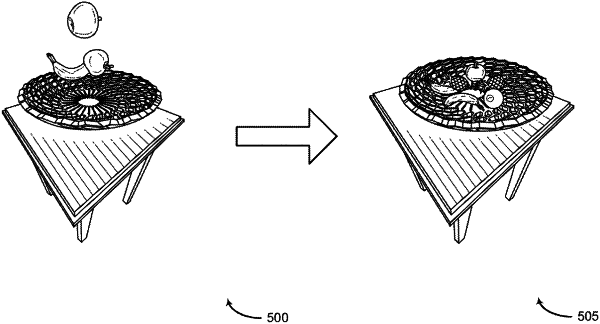| CPC G06T 19/20 (2013.01) [G06F 3/04815 (2013.01); G06T 17/00 (2013.01); G06F 3/0482 (2013.01); G06T 2200/24 (2013.01); G06T 2210/21 (2013.01); G06T 2219/2004 (2013.01); G06T 2219/2016 (2013.01)] | 20 Claims |

|
1. A method for three-dimensional (3D) modeling, comprising:
receiving manipulation input indicating an end state for editing a scene in a static 3D modeling application;
identifying an initial rigid transform and a target rigid transform of an object in the scene, wherein the initial rigid transform represents an initial state of the object in the scene and the target rigid transform represents the end state indicated by the manipulation input;
identifying a number of simulation steps based on the initial rigid transform and the target rigid transform;
computing a force parameter based on the target rigid transform and a set of motion constraints corresponding to the scene in the static 3D modeling application;
interpolating between the initial rigid transform and the target rigid transform by performing a simulation based on the force parameter, the set of motion constraints, and the number of simulation steps; and
generating a modified scene in the static 3D modeling application corresponding to the end state based on the interpolation, wherein a modified end state of the modified scene differs from the end state indicated by the manipulation input based on the set of motion constraints.
|